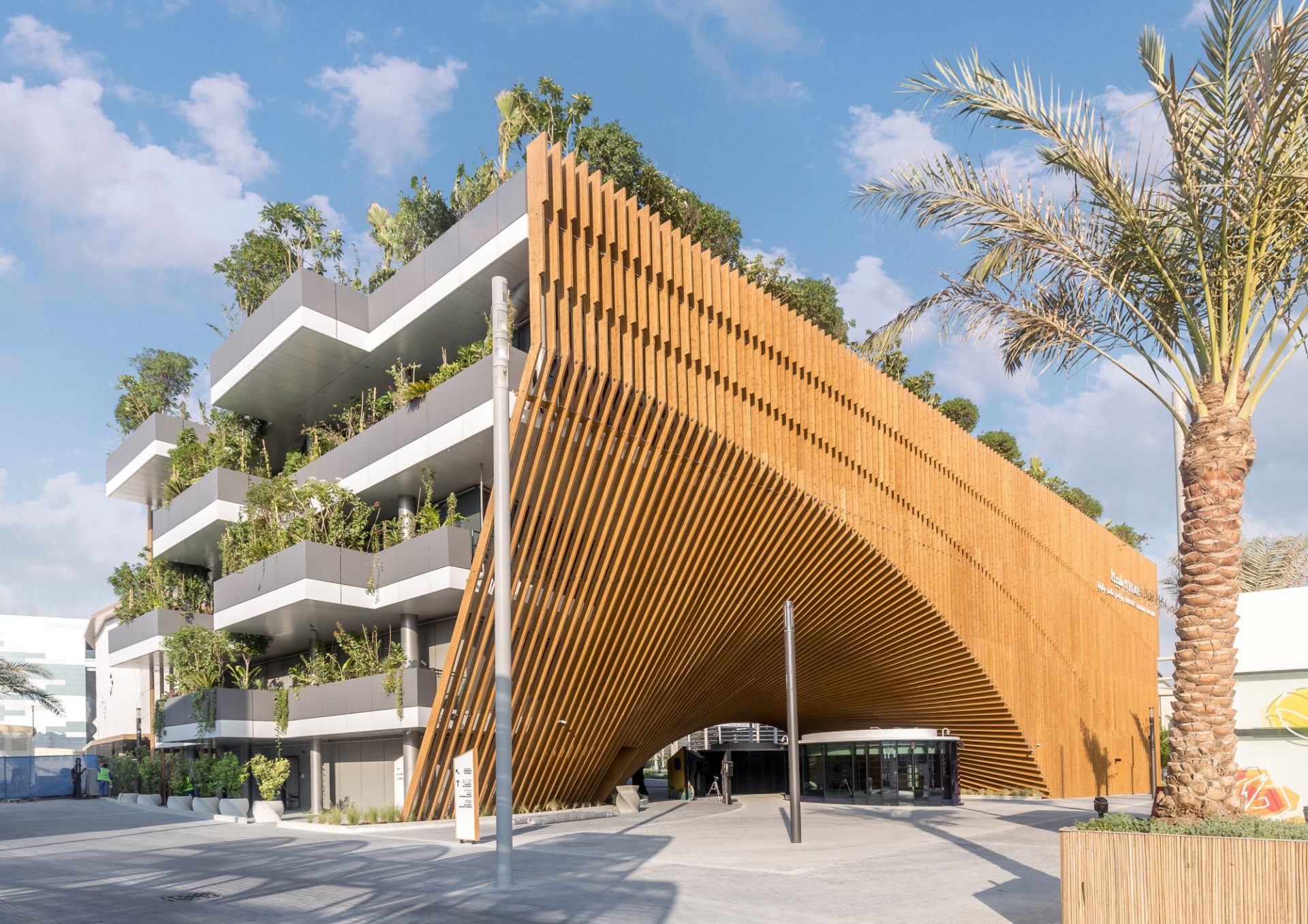The Belgian Pavilion Connects Minds
Designed and brought to life by Vincent Callebaut Architectures and Assar Architects, The Belgian Pavilion at the Dubai World Expo 2020 is an ode to a circular economy, offering spaces of mobility with green naturally ventilated public space and loads of Belgian culture.
Keeping with the theme of Expo 2020 Dubai, “Connecting Minds, Creating the Future, Vincent Callebaut Architectures and assar architects united their respective expertise to proclaim that architects and citizens are now able to co-build ecological, inclusive, and solidary cities.
“The Belgian Pavilion is called “The Green Arch”, as it combines intensive greenery and futuristic design in solid wood. The pavilion aims to be exemplary in terms of sustainable development. It is an ode to a regenerative circular economy, to biobased and geo-sourced materials, to the integration of bioclimatic rules and renewable energies, as well as to the preservation of biodiversity and nature,” explained Vincent Callebaut.
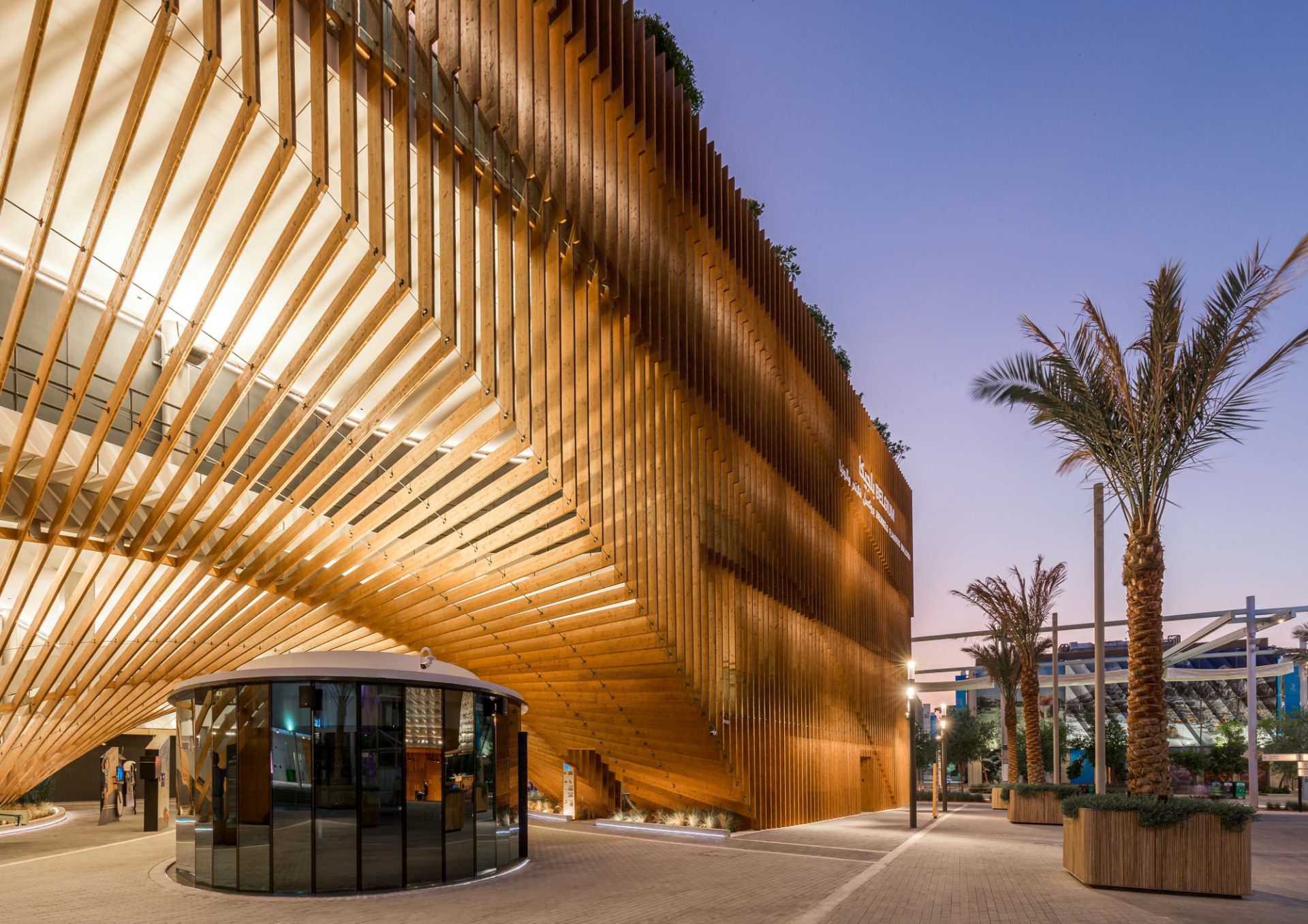
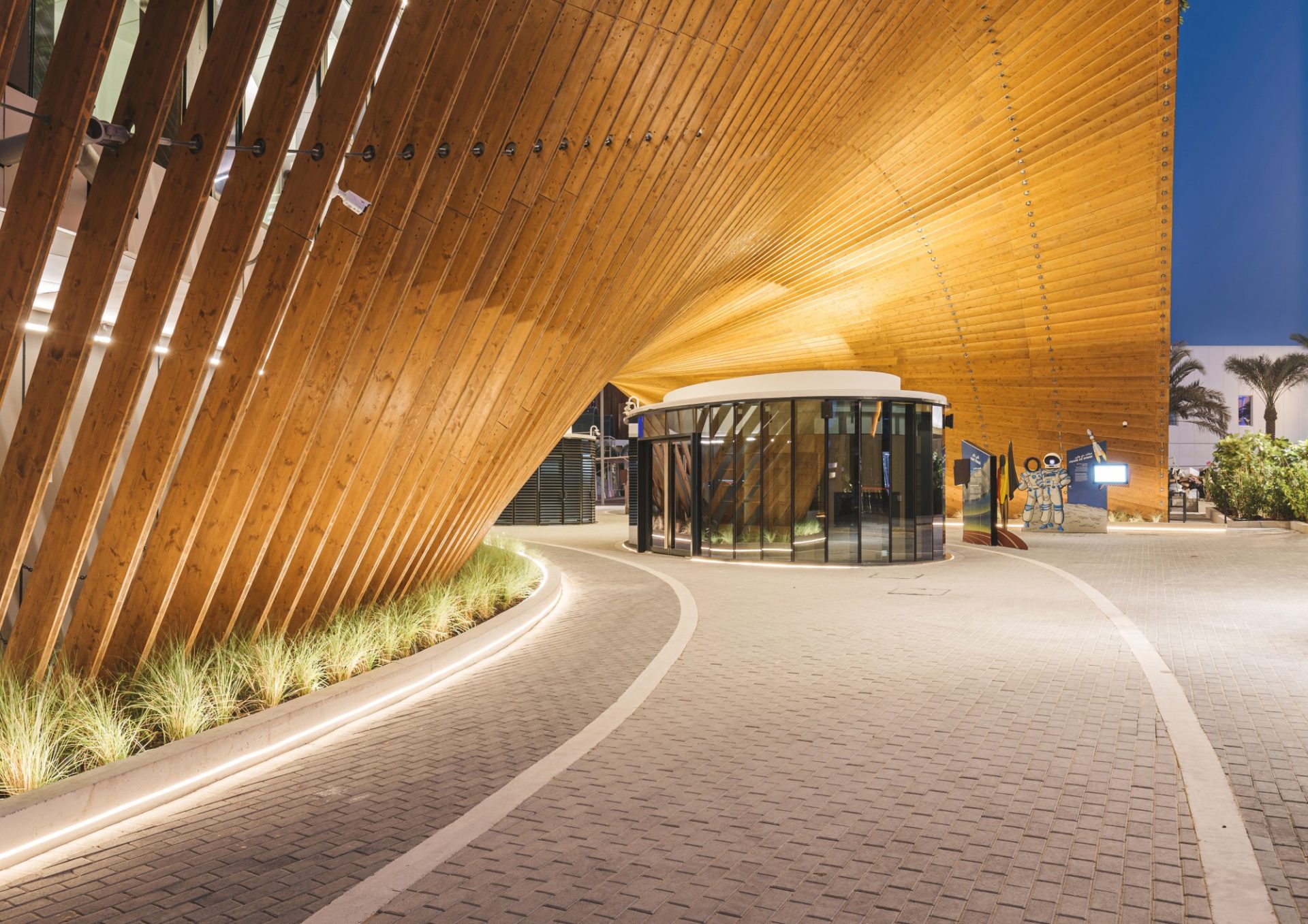 Located in the “Mobility District”, the architectural concept of the Belgian Pavilion is to offer visitors the largest shaded and naturally ventilated agora in the axis of the prevailing west-east winds of Dubai. Its programming is placed higher up so that a maximum of the ground floor space is free to use for the public.
Located in the “Mobility District”, the architectural concept of the Belgian Pavilion is to offer visitors the largest shaded and naturally ventilated agora in the axis of the prevailing west-east winds of Dubai. Its programming is placed higher up so that a maximum of the ground floor space is free to use for the public.
“This means that “The Green Arch” is based on a “bridge-building”, creating an immense vault with double curvature between its two pillars. This curvaceous vault is generated from a universal mathematical minimum surface called “hyperbolic paraboloid”. This paraboloid is built-in CLT – Cross Laminated Timber – with more than 5.5 linear kilometers of spruce louvers generating a giant wooden Mashrabiya – which by rotating of 180 degrees – envelops the entire project to better protect it from solar radiation,” explains the creator.
The agora was designed as a “shortcut”, directly linking the “Mobility District” and the “Sustainability District” by crossing the pavilion. The street furniture of the public spaces on the ground floor was entirely made of 3D-printed white concrete.
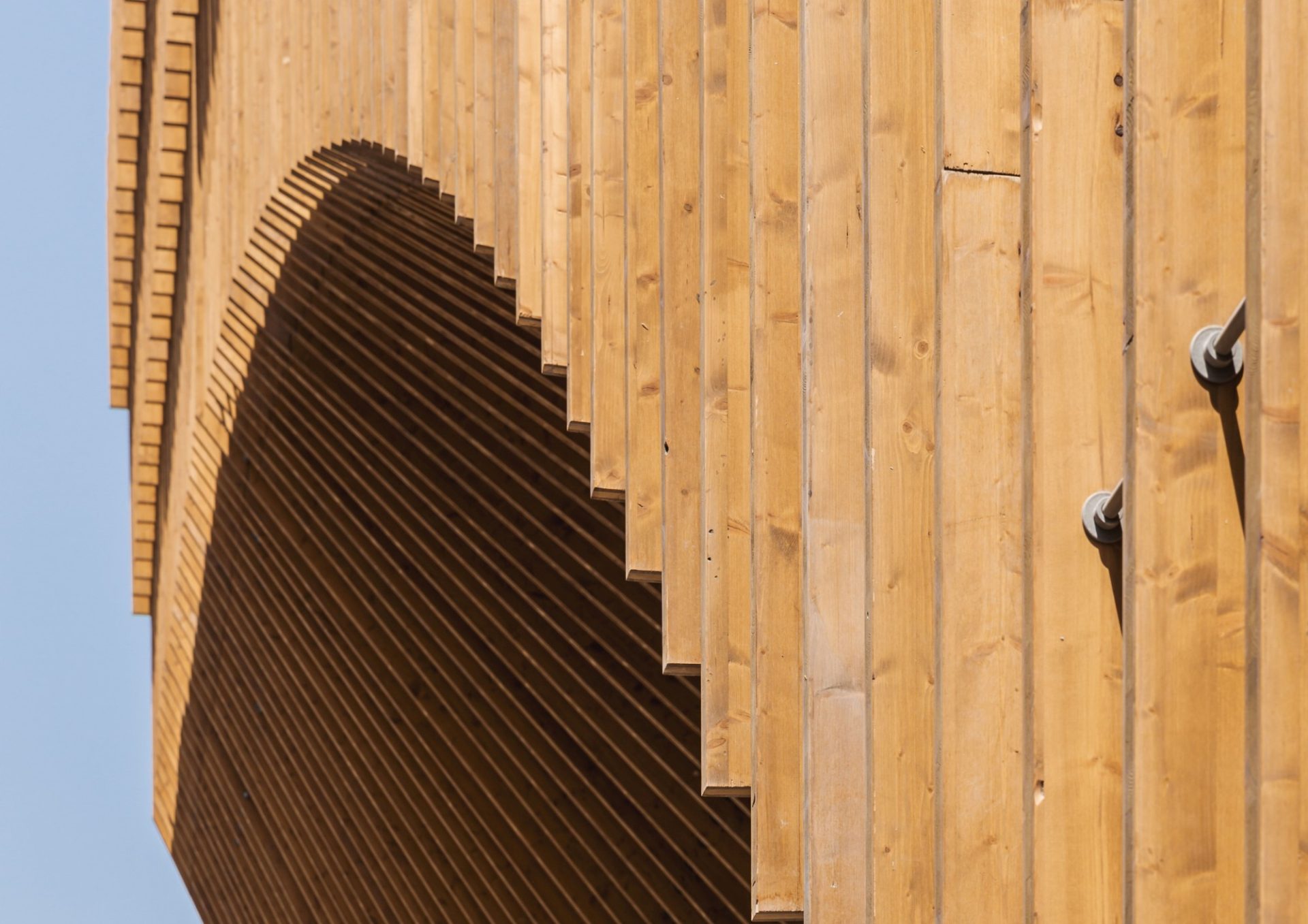
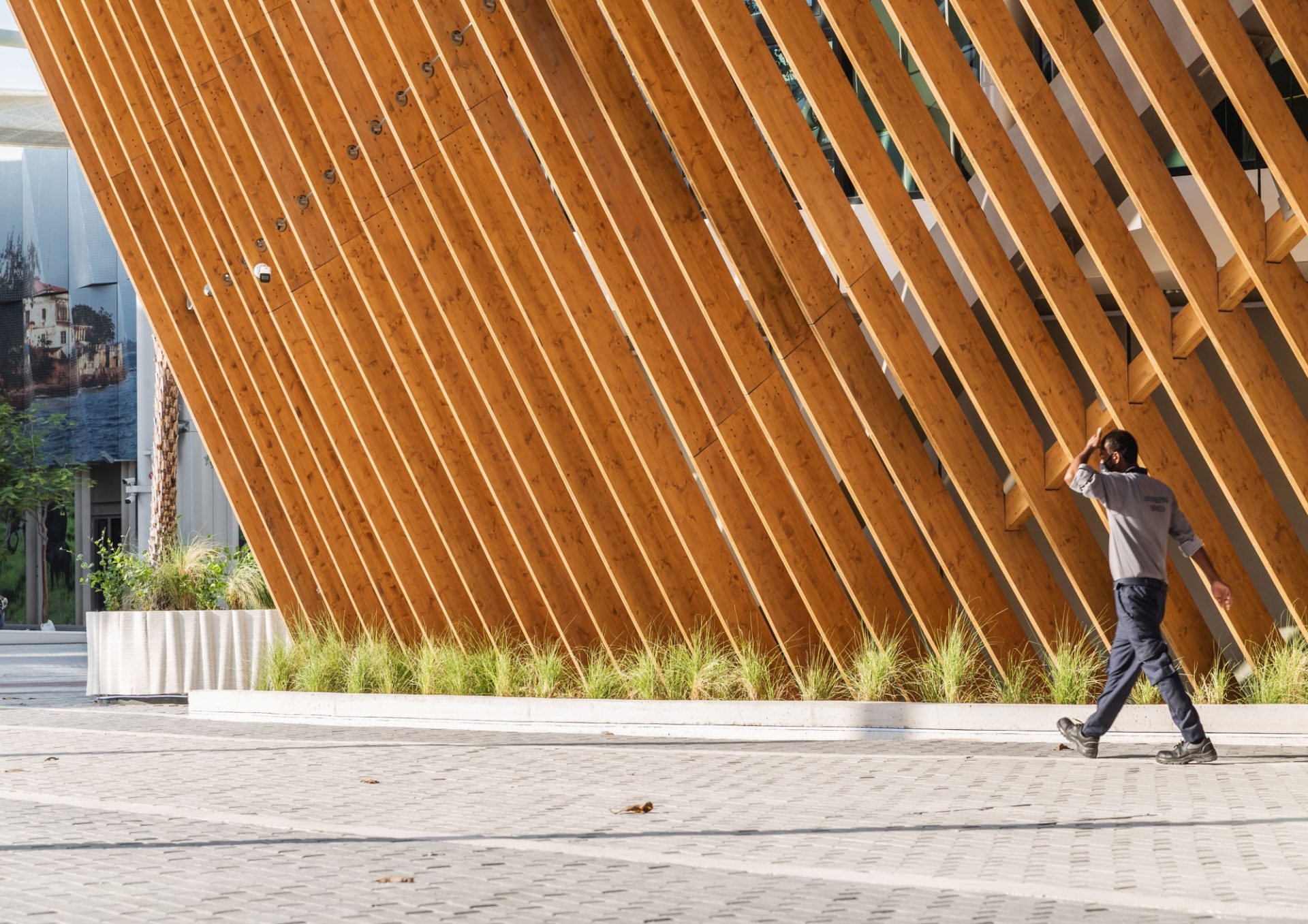 “In addition to Belgian staples such as French fries, waffles, and chocolate merchants as well as restaurants, the pavilion offers a view of the Belgian landscape of 2050 under the slogan “2050 Smart & Green Belgium”. Starting at the meeting space under the arch, great Belgian personalities are depicted as comic book characters who announce the breadcrumb trail of the educational scenography imagined by our partners’ Facts and Fiction,” says the architect.
“In addition to Belgian staples such as French fries, waffles, and chocolate merchants as well as restaurants, the pavilion offers a view of the Belgian landscape of 2050 under the slogan “2050 Smart & Green Belgium”. Starting at the meeting space under the arch, great Belgian personalities are depicted as comic book characters who announce the breadcrumb trail of the educational scenography imagined by our partners’ Facts and Fiction,” says the architect.
The scenography is broken down into four highlights: the futuristic escalator, designed as a space-time tunnel, propels visitors towards the 2050 odyssey, secondly, once again accompanied by the Belgian comic heroes, the “Future Mobilty Lab” provides the three regions (Brussels, Flanders, and Wallonia) to exhibit the means they implement to move towards soft and low mobility-carbon at the national level. Third, the “Main Show” offers an immersive video-projection experience that erects a sustainable and resilient Belgium skyline for 2050. And finally, the “Belgium Mobility Hub” invites everyone, young and old, through unprecedented dynamic capture, to project themselves into the Belgian cities and ecological architectures of tomorrow.
At the end of the exhibition, visitors are invited to taste Belgian specialties at a restaurant or on the panoramic rooftop offering breath-taking views towards the main dome “Al Wasl” to the East or towards the thematic pavilion of the “Mobility District” to the West.
The “BeBizz” Business Center and its VIP Lounge also offer a high degree of flexibility in amenities to host business talks and international dialogues, to connect minds, and create the desired future, according to the creators.
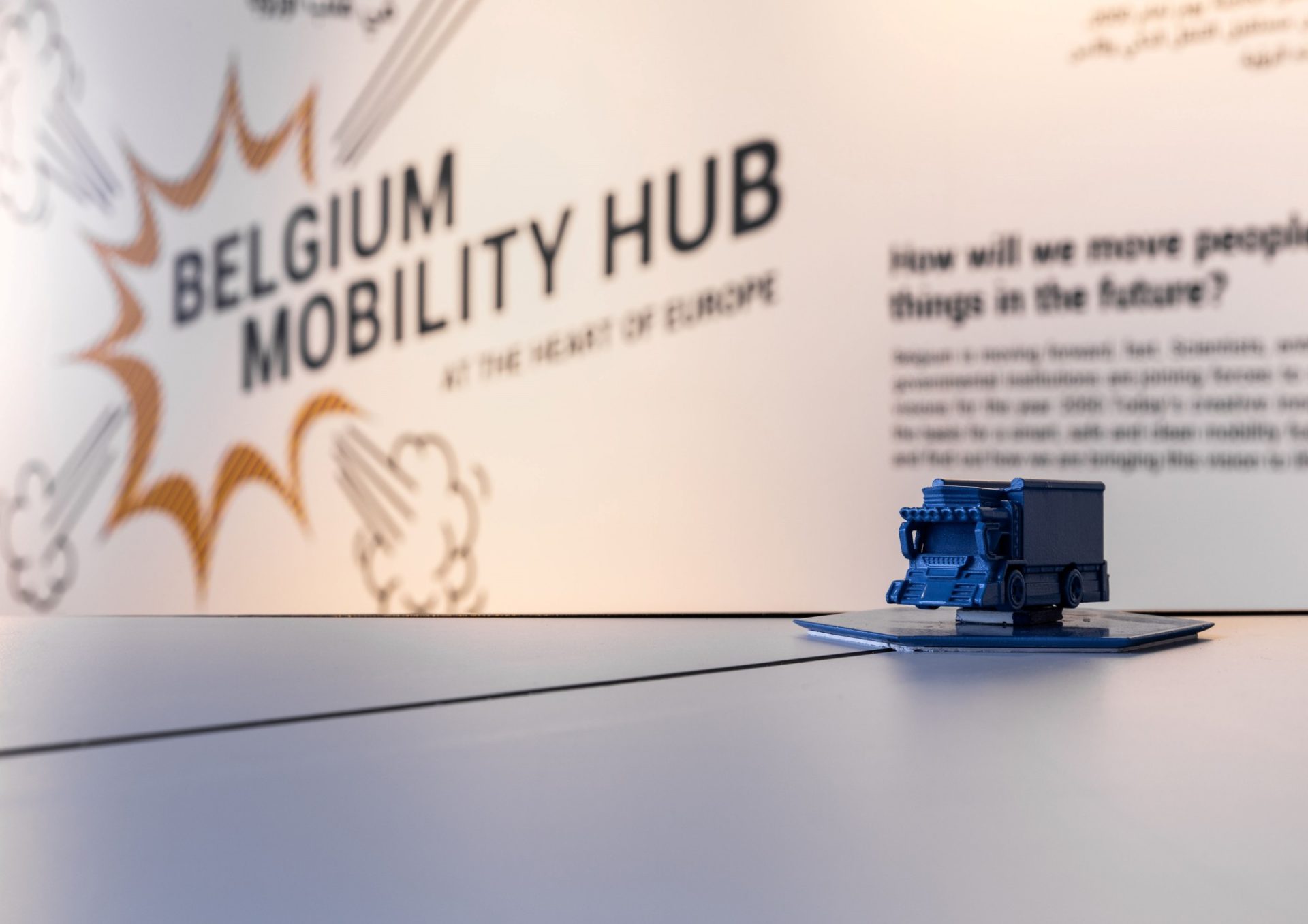
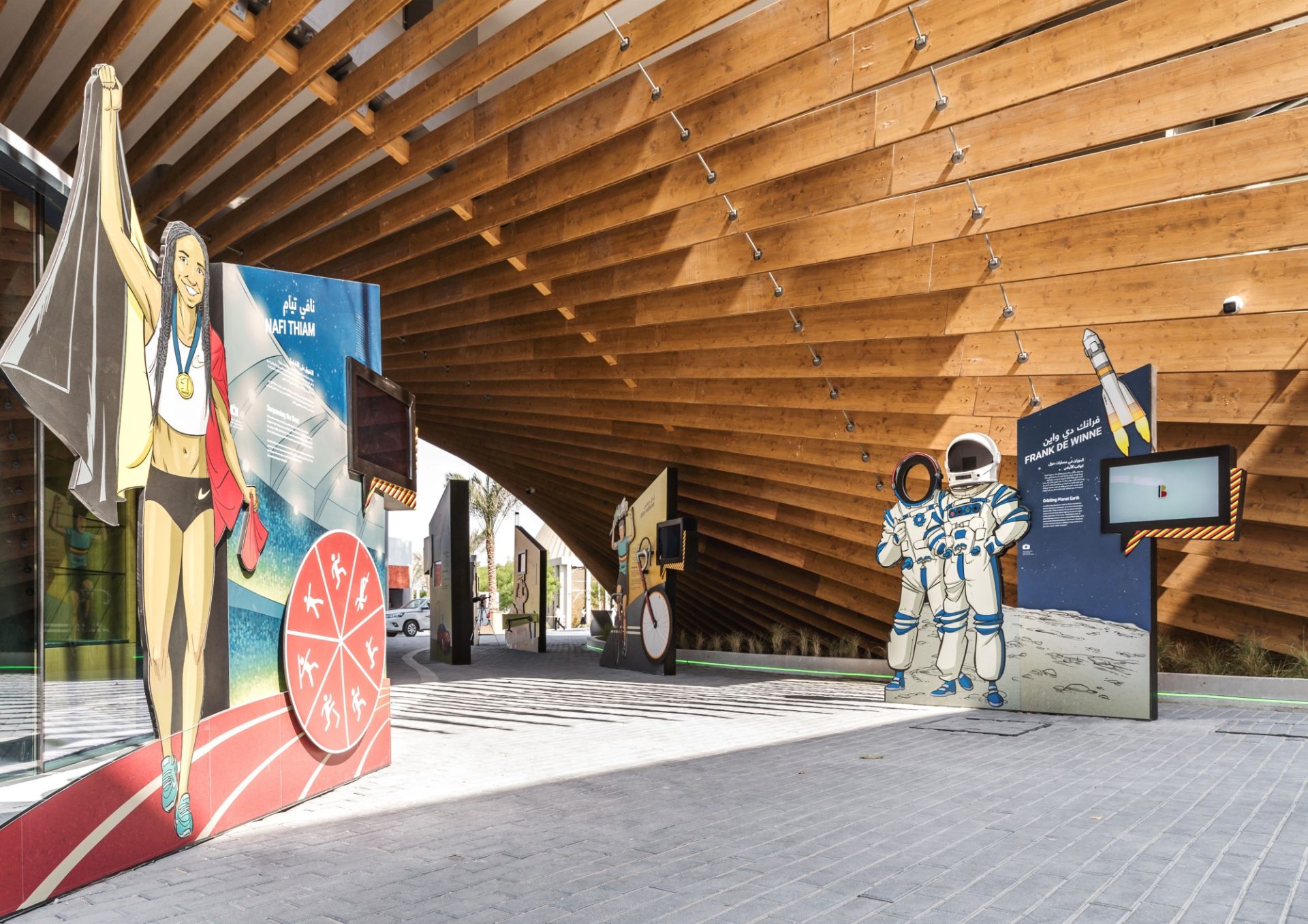 The pavilion is based on renewable energy principles covered with a large photovoltaic and thermal solar canopy, producing electricity and domestic hot water for the pavilion’s self-consumption.
The pavilion is based on renewable energy principles covered with a large photovoltaic and thermal solar canopy, producing electricity and domestic hot water for the pavilion’s self-consumption.
It is also a biophilic architecture that hosts a rich program whose balconies and rooftops are planted with intensive vegetation of more than 2,500 plants, shrubs, and trees. These are “breathable”, drip-watered facades, naturally refresh – through evapotranspiration from the plants – large outdoor terraces.
 “The Green Arch” perfectly expresses the concept of “Belgitude”, this typically Belgian aptitude for synthesizing in the heart of Europe the very creative Latin romantic spirit with the pragmatic ingenuity of Germanics and Anglo-Saxons.
“The Green Arch” perfectly expresses the concept of “Belgitude”, this typically Belgian aptitude for synthesizing in the heart of Europe the very creative Latin romantic spirit with the pragmatic ingenuity of Germanics and Anglo-Saxons.
The construction is the result of a public-private partnership between General Commissioner BelExpo, the Régie des Bâtiments, and the Besix construction company. In total, 93 companies took part in the project, 46 of which were involved in sponsoring the pavilion designed on the principles of the circular economy. “The building will not be doomed to destruction,” said Pierre-Yves Dermagne, the Belgian Federal Minister for the Economy. “Everything has been done so that it can be rebuilt, I hope, in Belgium.”


